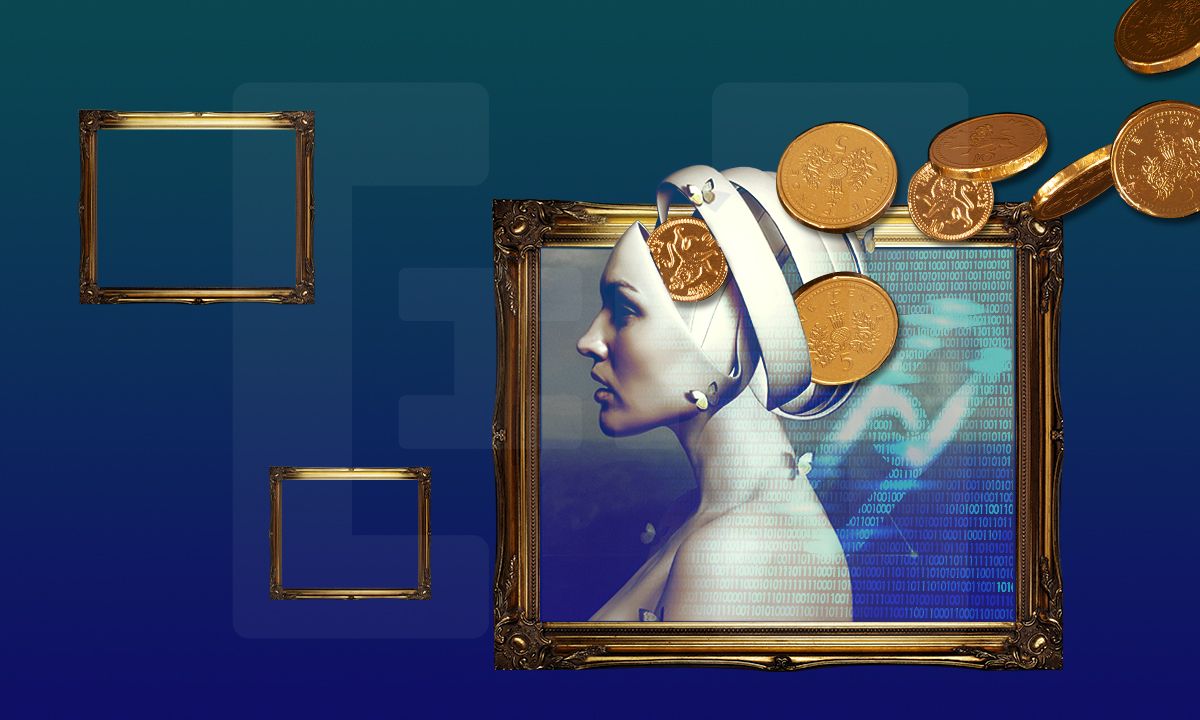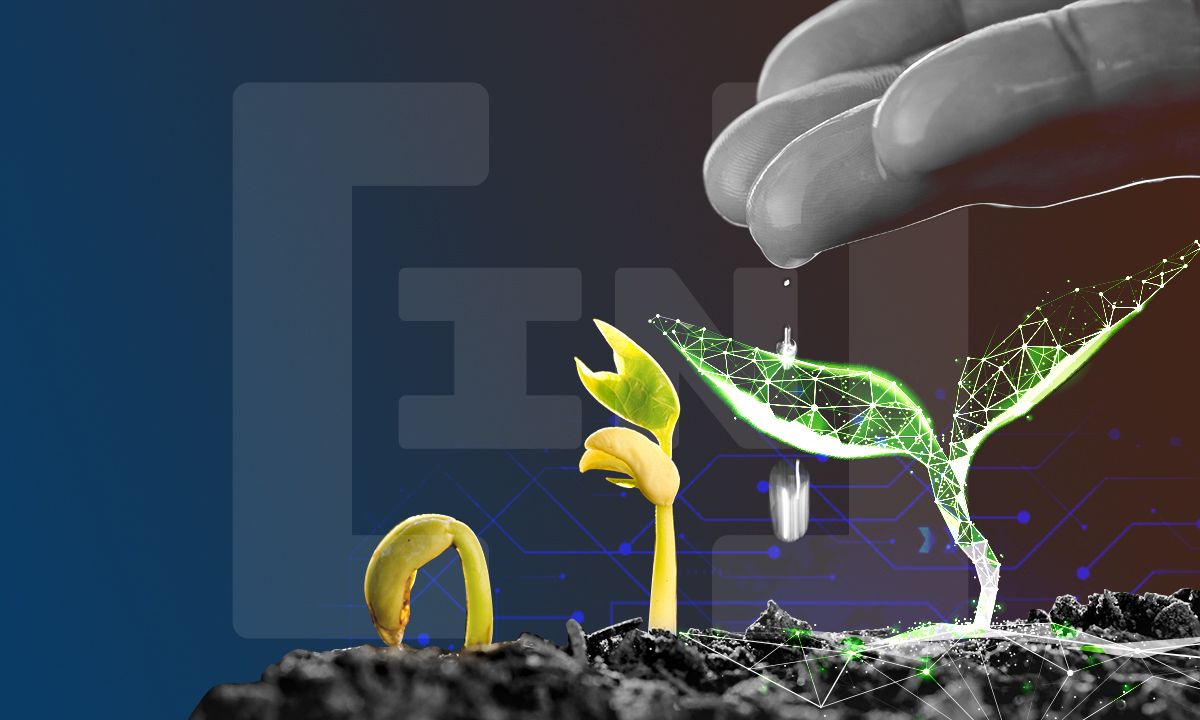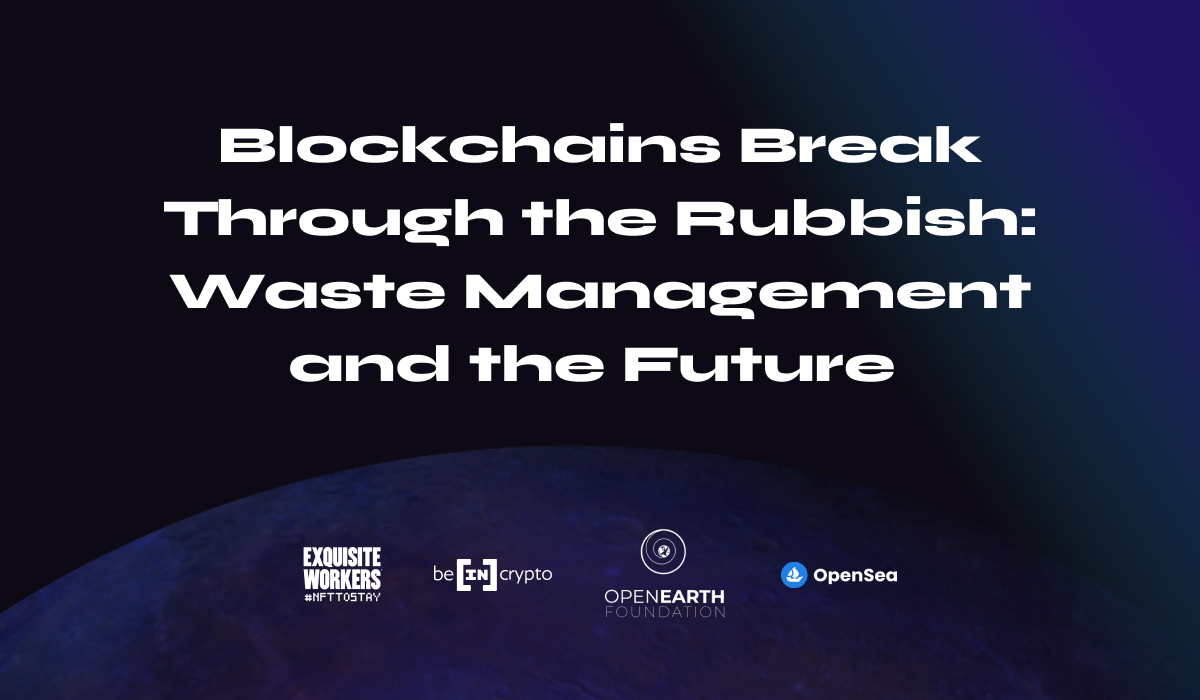Blockchain is poised to change the world.
Since the internet began seeing mainstream adoption in the 1990s, it has changed the nature of communication, commerce, and entertainment.
This was further enhanced in the next decade with the widespread adoption of smartphones, and the Internet-of-Things, integrating the internet into the fabric of our daily lives. The next step, Web 3.0, will be facilitated by the blockchain. This will have a profound impact on the future development of society.
In a new series of features, BeInCrypto will speculate how the blockchain change the world in the next 50 years. This piece will cover how the blockchain will affect waste management, a key component of environmental sustainability necessary for preserving life on this planet.
To achieve such an end, we must first understand how the blockchain works and how its capacities will be integrated into mainstream lifestyles.

Several projects already underway can help us understand the potential of its influence. Once broadly understood and accepted, its advantages will compel its integration into all levels of society, from the personal and professional levels, all the way up to corporate, legal, and governmental levels.
Blockchain integration
Although much more elaborate and precise descriptions can be found on this news portal, in essence, blockchain is a distributed ledger.
When a transaction takes place between two parties, this is kept in a ledger. This is usually centralized and private, meaning it has the potential to be tampered with.
The blockchain spreads this ledger over hundreds of thousands, if not millions of computers. This makes these transactions public and would inconceivably require control over a majority of those machines to tamper with the records, each block of which is encrypted. The decentralized, public and secure nature of the blockchain has profound implications.
Apart from simple monetary transactions, which bitcoin prototyped, programs are also being built on the blockchain, known as smart contracts.
One way in which they are gaining mainstream interest and notoriety is with non-fungible tokens (NFTs). These enable data to be minted into unique tokens, which can then be sold.
This makes them an ideal vehicle for artists, musicians, and other content creators. They can tokenize their work on a blockchain, making it officially theirs, then sell it, and, as the original creators, potentially receive proceeds every time it resells. This is already starting to disrupt the art industry.

The next logical step is for the blockchain to integrate itself into everyday users’ lives. As most people today use the internet and largely rely on it for their entertainment, this is likely where we’ll see greater interest and adoption.
The Brave Browser is one such example. As users understand that their data is a personal asset, fewer are willing to surrender it without due cause or compensation. The Brave browser blocks websites from collecting data about users while collecting its proprietary information.
It then uses this information to select ads it thinks will interest users, then compensates them with cryptocurrency for engaging with the ads. Whereas NFTs may have stimulated people’s curiosity, platforms like Brave will have their attention (and compensate them for it).
As blockchain’s advantages of security and transparency are understood, people will be empowered with their data and incentivized to include more of it on the blockchain.
This will become standard for society and will increasingly become expected of larger organizations, corporations, and governments as well. The incentivization aspect and compulsion to include supply chains on the blockchain is key to understanding how the blockchain will affect waste management.
Blockchain waste collection in action
Waste collection essentially consists of different data points along a chain. These range from the type of waste, to where it is collected, and by whom, to where it eventually ends up, or where it is processed, and where it ends up.
As such, it is only natural that blockchain technology has the potential to facilitate and incentivize improvements to that process. To grasp how this integration will play out, it helps to look at several projects already in the works.
In Argentina, local entrepreneur Ivan Zubilewicz was inspired to establish a waste-collection initiative after discovering blockchain in 2015. He created JellyCoin, whose value is pegged to the Argentinian peso.
In that country, some waste collection is done by “cartoñeros,” people who sort garbage then bring it to the appropriate processing points. JellyCoin intends to compensate these “cartoñeros.”
for how much waste they collect, sort, and deliver, as well as how far they’ve traveled.
Zubilewicz says JellyCoin could also be used to make certain payments to the city, such as real estate taxes.
Besides incentivizing more responsible behavior, blockchain integration can also add transparency to waste collection processes.
In Bengaluru, India, the municipal government, Bruhat Bengaluru Mahanagara Palike, has an app for local issues, one feature of which deals with regulating waste management. Users can submit complaints through the app regarding local waste collection, such as if garbage is not collected or accumulates at one particular spot.

Although in practice, municipal workers must document spots they’ve cleaned via geotagging, there have been instances of neglect or record tampering. However, the non-profit group Citizen Involved & Technology-Assisted Governance (CITAG) is in talks with the government to upgrade the app to a blockchain. This would make tampering with logs become a non-factor.
What has the greatest potential in terms of long-term impact is a precedent being set by New York startup RecycleGO.
“What the world needs are scalable solutions, broad scalable solutions in terms of tracking, in terms of attaching data to human activity, in terms of really allowing social impact behavior to be monitored, measured, and credited,” CEO Stan Chen said.
RecycleGO has several projects taking place around the world that involve putting waste on the blockchain, so its trajectory can then be tracked and accounted for.
The startup already has bottle collection projects underway in Miami and Nigeria, as well as a similar project in Ghana tagging and tracking fishing nets. If properly implemented, these types of projects could become the standard for waste collection in the future.
Blockchain waste management hits the bottom line
Now that we understand blockchain technology and how it can be used to facilitate waste management, let’s project how it will affect society in the future.
As mentioned before, blockchain will become a natural part of people’s lives and all the systems they use. This will be extended to include larger organizations, corporations, and governments.
In this instance, we are interested in how it affects corporations, who are the major contributors to environmental degradation, through greenhouse gas emissions to the generation of non-recyclable waste. As supply chains are integrated on the blockchain, these byproducts will be included as well.

Since these records will be immutable and transparent, companies will become accountable for the waste they generate and the products they make that eventually become waste.
The amount of waste they produce will be recorded and need to be compensated for. Since the source will be known, the generating companies will need to account for any waste that accumulates and causes contamination of the surrounding environment.
These companies will also be on the hook for the resulting illnesses that come with breathing polluted air, drinking contaminated water, or unwittingly ingesting microplastics. As their bottom lines are affected by the sheer scale of the effect of their byproducts, they will be left no choice but to seek alternatives.
Polluting companies will invest in developing cleaner alternatives to developing their products. Companies that deal in fast-moving consumer goods will diminish or eliminate the plastic material they use for packaging, and seek creative, more sustainable options.
Finally, on an individual level, as most of the processes and transactions that take place in our lives will be recorded on the blockchain, individuals will also become responsible for the products they buy and any waste that comes along with it. Naturally, they will be compensated for their sustainable efforts.
(Editor’s note: This article and the corresponding NFT (NFT#195) were produced as a part of BeInCrypto’s Star Edition NFT Series. This exciting NFT series consists of nine pieces of digital art by Exquisite Workers, all of which will be auctioned off alongside letters written by industry professionals sharing their thoughts on the future of NFTs. More on that below.)
Introducing BeInCrypto Star Edition NFT#195
To celebrate its third year as a globally trusted blockchain and cryptocurrency news platform, BeInCrypto is launching a non-fungible token (NFT) charity auction in collaboration with Exquisite Workers. All proceeds generated from the auction will go to the Open Earth Foundation, a non-profit on a mission to leverage the latest trends in digital technology to help increase planetary resilience.
The Star Edition NFT Series includes nine pieces of digital art by Exquisite Workers. Each of these NFTs will be auctioned off alongside letters written by industry professionals sharting their thoughts on the future of NFTs.
KURO 3 A.M. by Roger Haus is NFT#195 in the series.

An award-winning artist and the proud founder of Exquisite Workers, Roger Haus elegantly finalizes the narrative around the future, illustrating the BeInCrypto’s last prediction, the only NFT uniquely available to the collector.
About Roger Haus
Roger Haus is an award-winning artist and the proud founder of Exquisite Workers. He studied at La Llotja Arts and Crafts Academy where Pablo Picasso and Joan Miró used to take lessons and also obtained his degree in Superior School of Design and Fashion IDEP in Barcelona.
Excited about the mesmerizing work of surrealists, Roger’s art is the invitation to the subconscious universe. His most famous work Hypnagogies was featured on Wetransfer, TimeOut, Visions Gallery, and Exquisite Workers’ historical “NFT to stay” mission.
With a proven reputation in Art Direction, he has an extraordinary portfolio of digital artists eager to create culturally rich art for businesses and leading NFT and Metaverse projects. Roger Haus is keen on minimalistic, humanist and timeless design and passionate about Hip-Hop and Kawaii culture.
What makes him the happiest person in the world is seeing Salvador Dalí’s paintings with his own eyes and crossing the gorgeous Mediterranean sea under the rain.


